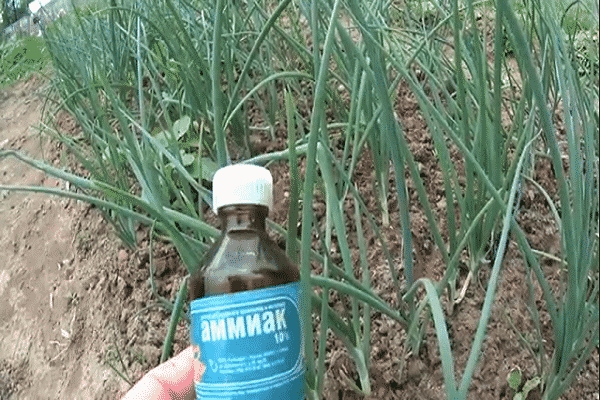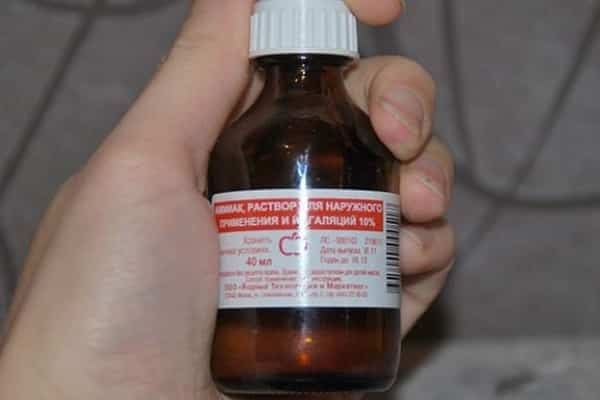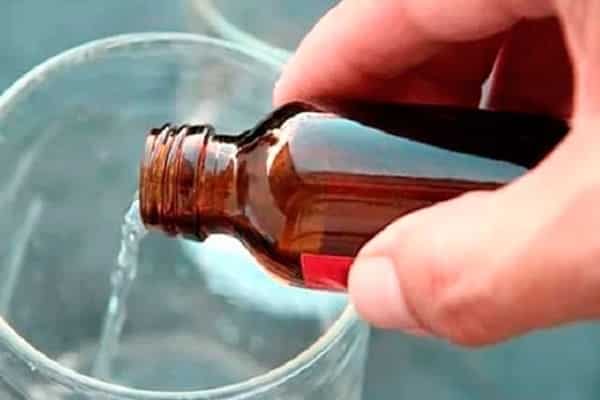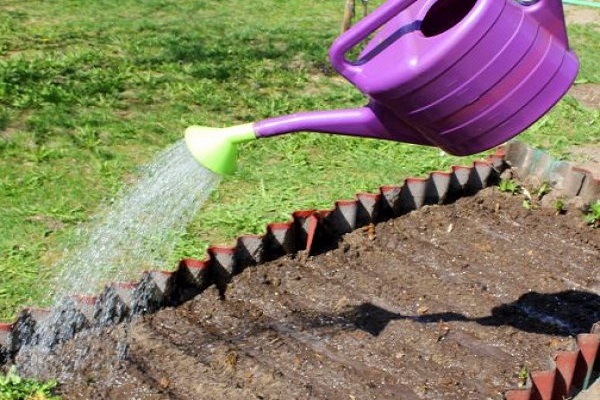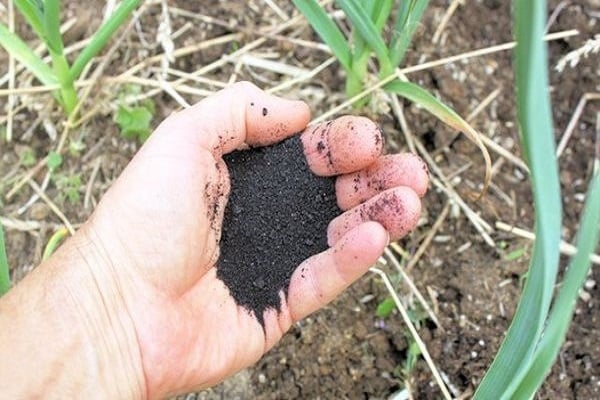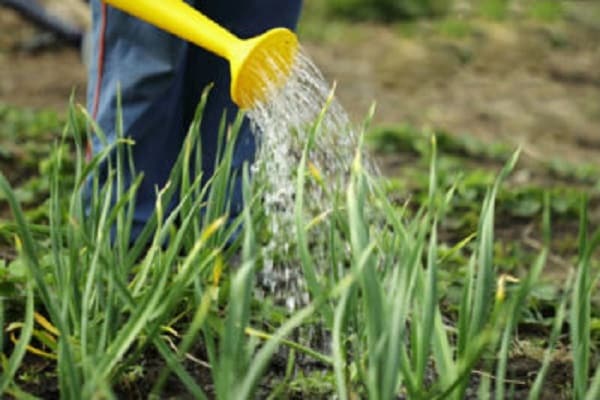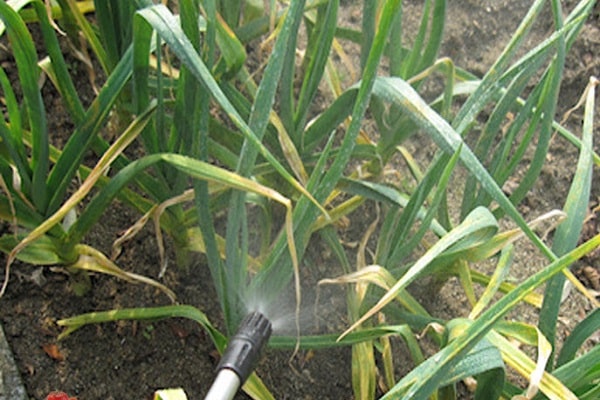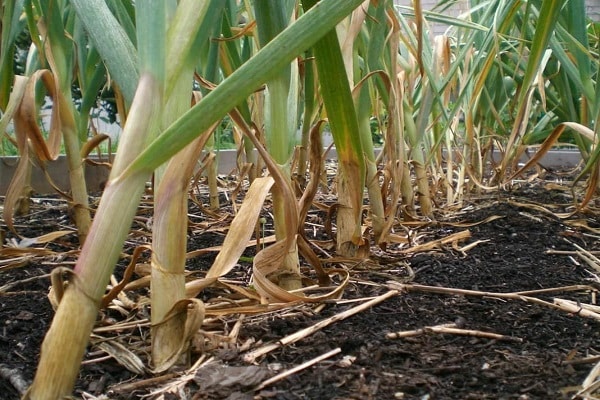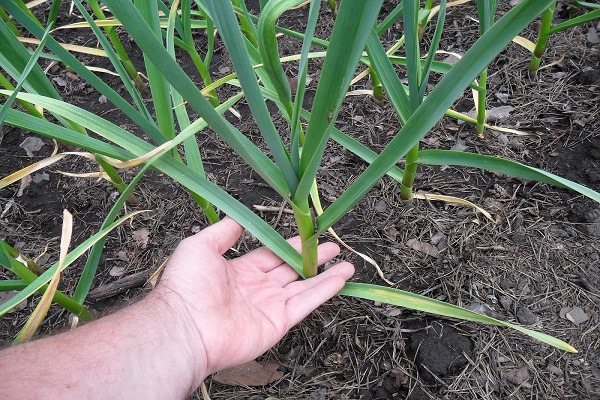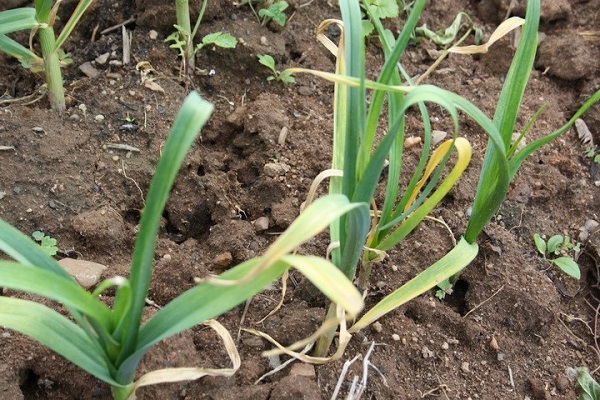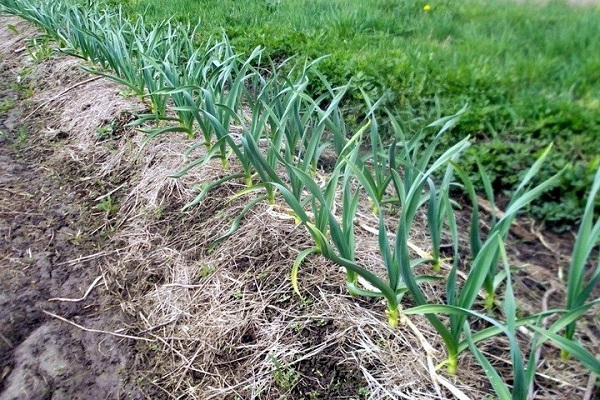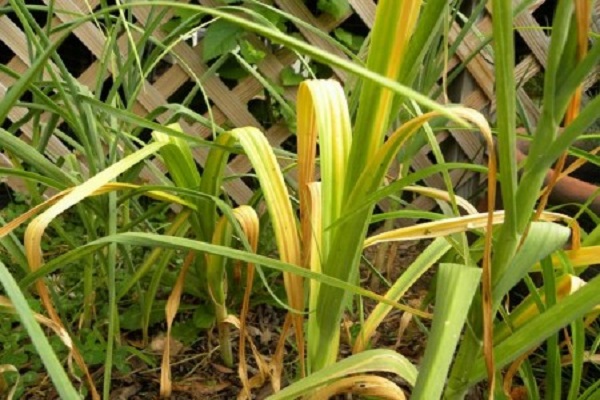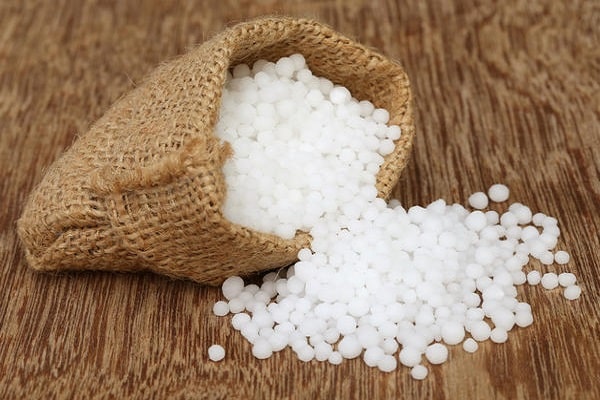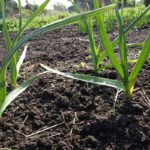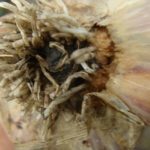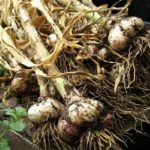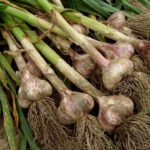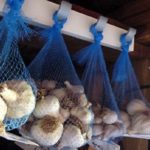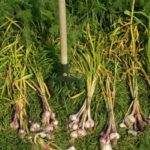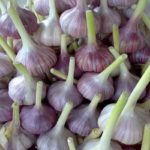Among summer residents, the popularity of folk recipes for caring for vegetables is growing. Feeding garlic with ammonia helps many people grow vigorous heads. Many people will need useful information about how to use an inexpensive pharmaceutical drug.
Beneficial features
Ammonia is produced by combining ammonia with water. Ammonia is a colorless gas with a very unpleasant odor. You can buy a bottle of ammonia at any pharmacy. It is produced in the form of a 10% solution. The label may say “Ammonia” or “Ammonia”.In both cases it is the same remedy.
From the formula of ammonia NH₄OH it is clear that it contains nitrogen (N). This chemical element is necessary for all plants to grow. Vegetables can absorb nitrogen from the soil, not in pure form, but in the form of a compound.
The benefit of ammonia is not only in the high concentration of nitrogen. With its pungent odor, it repels pests from plants. Insects that encroach on garlic are also afraid of it:
- onion fly;
- carrot fly;
- aphid;
- wireworm;
- weevil.
Yellow leaves on garlic This is the first sign that there are pests in the garden. Using ammonia water you can solve two problems: feed the growing garlic with nitrogen and rid it of pests.
Why do many people choose ammonia?
Someone will disagree and say that there are a large number of nitrogen-containing fertilizers and various insecticides to solve these problems. This is true, but the main advantage of feeding garlic with ammonia is the absence of nitrates in the crop. For many, the desire to grow organic vegetables is the main goal, so they choose ammonia.
Let's list the advantages they receive:
- there is no accumulation of nitrogen in the heads;
- saving money, since the drug is cheap, its processing costs are low;
- the nitrogen contained in ammonia is easily absorbed; this can be seen from the juicy, bright green feathers and filling heads;
- You don’t have to worry about overfeeding the garlic with nitrogen, this 100% won’t happen.
The main rule of an experienced gardener is not to eliminate the problem, but to prevent it. Don’t wait until yellow garlic feathers appear in your garden bed, use our recipes for treating garlic with ammonia and forget about your problems.
How to feed garlic with ammonia?
You must adhere to the recipe even when using safe substances as fertilizer.Let us consider separately the method of diluting ammonia for fertilizing garlic and the recipe for preparing a solution that water garlic from pests.
Recipe for pests
This recipe can be used for onions; both crops suffer from the same insects. The recipe requires ammonia, water and soap. Soap detergent should be added to the aqueous solution. Gardeners prefer 72% laundry soap. It must first be grated on a grater with small holes.
To prepare, take a 10-liter bucket of water. To obtain the working fluid, take 100 g of grated soap and 50 ml of ammonia. Soap shavings are diluted with a small amount of hot water and only then poured into a bucket. Before use, the solution should be mixed well again and immediately begin processing.
Important! Use the prepared solution immediately before the ammonia evaporates.
To work you will need a sprayer. For pests, you will need to spray the entire garlic stalk. It doesn’t matter, if the solution remains, you can use it to treat cabbage against cruciferous flea fleas or aphids. During the summer of carrot flies, treatment with ammonia will protect carrot beds. One treatment is not enough; it will need to be repeated 2-3 times.
Preparing fertilizer
It is necessary to feed garlic with ammonia every 2 weeks, without waiting for signs of nitrogen starvation. During the summer, alternate root and foliar forms of fertilizer application. For example, winter garlic (planted in the fall) is watered with ammonia in the spring 2 weeks after the feather appears. At the end of June, water the garlic bed for the last time.
To prevent nitrogen starvation, prepare a low concentration ammonia solution. 2 tablespoons of the drug per bucket of water is enough. Water the garlic early in the morning or in the evening after 17-00, this also applies to treating the feathers against pests. Watering in sunny weather can cause leaf burn.
Signs of nitrogen starvation
How to understand that there is not enough nitrogen in the soil and garlic needs fertilizer. Like any other vegetable crop, it signals a problem through external manifestations. Here are the main signs of nitrogen deficiency:
- small feathers;
- slow head formation;
- limp, yellowed feather;
- pale color of the stem.
The yellow color of the leaves sometimes signals a lack of iron, and also if the gardener rarely waters the garlic bed and the soil often dries out. The difference between nitrogen starvation is the yellowing of old leaves first and young leaves second.
Let's figure out why a lack of nitrogen is dangerous for crops. You won't be able to get a good harvest. Due to the gradual yellowing of the leaves, less nutrients reach the head; they are not enough to form a full-fledged head.
Reference. In soil with low nitrogen content, weeds have red streaks.
Nitrogen deficiency is most common in acidic soils. Finding out the pH of the soil in your area is easy. Litmus paper is commercially available for this purpose. It’s even better if you have a special device in use to determine acidity. They are inexpensive and always on sale. Adjusting soil acidity will help increase garlic yields.
Useful tips
In gardening, advice from experienced summer residents will never hurt. Sometimes little things make a big difference. Ammonia fertilizing has such features. Knowing about the high volatility of the substance, experienced gardeners sprinkle the garlic bed with soil immediately after watering with fertilizer.
Garlic can be winter (planted before winter) and spring (planted in spring). The timing of watering them with ammonia varies. Winter crops are fertilized for the first time when they have just hatched from the ground; spring crops are fertilized only after 5–6 feathers have formed.
In emergency cases, with acute signs of nitrogen starvation, it is recommended to apply a fertilizer containing a loading dose of ammonia once. For 1 liter of water take 1 tbsp. l. facilities. Watering is carried out between rows. This measure is resorted to in the most extreme cases.
One more tip regarding landing. Garlic doesn't grow well on heavy soils with a high clay content. Sand can improve the situation. It can be added to the bottom of the hole when planting and the head covered on top. The trick is small, but effective.
How else to feed garlic?
Ammonia is not the only remedy that gardeners use when growing garlic. Grass is considered a good supplier of nitrogen; you can find it in any country house. Lawn clippings and regular weeds will do. The picked grass must first be chopped, then filled with 2/3 of the entire volume.
Fill the barrel to the top with water and leave to ferment for 2 weeks. Stir the contents of the barrel 2-3 times during this period. The finished infusion is considered a concentrated fertilizer. It is not used in its pure form; it is customary to dilute it with water in a ratio of 1:10. You can feed garlic with this herbal fertilizer in June; it is not recommended to do this later, since potassium and phosphorus will be needed to form the heads.
Conclusion
In conclusion, one more simple piece of advice. Grow garlic in one place for no more than 2 years. After this, plant other vegetables on this ridge for 3 years. Excellent predecessors to it will be melon crops: zucchini, pumpkins and vegetables such as beans, cabbage, beans and peas.It grows well after strawberries.
It wouldn't hurt to plant vetch in the fall. Vetch is a legume that belongs to the green manure category. During the growth process, it loosens the soil, nourishes it with nitrogen, and cleanses it of infections, pests and weeds. Useful fertilizing and properly prepared soil will provide you with large heads of garlic throughout the winter.

